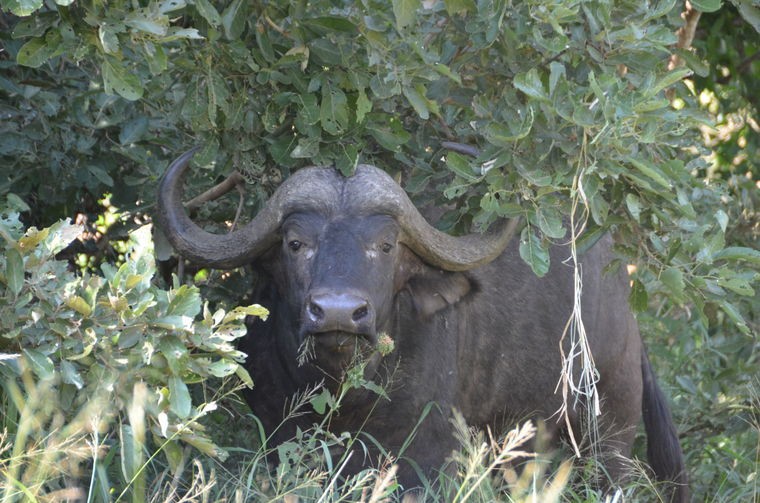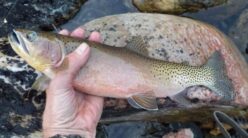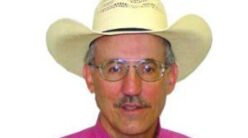Granted, hunting an animal that weighs upward of 2,000 pounds and is renowned for its ill temper and bad attitude, the hunter entails a few risks. I accepted that when I signed up for the cape buffalo hunt in remote Zambia in Africa.
What I didn’t sign up for was dealing with grass fires swept by gusting winds and stalking in on a herd of buffalo in tall grass only to be roared at by two lions hunting the same herd. The roars were close enough to make the hair stand up on my neck.
I bought the Zambia cape buffalo hunt at a major conservation fundraiser. I liked the idea that the money went to a good cause, and if successful we would deliver half of the buffalo to two different tribal chieftains who controlled the southeast half of the million-acre Kufe hunting concession area. The hunt would be conducted in one of Africa’s truly wild places.
Wild was right. Flames and smoke swept across miles and miles of grasslands and forest. High winds carried burning embers causing fires to hopscotch across the landscape. Animals moved out ahead of the fires. We moved out ahead of the fires. Once surrounded by fire, we drove to a pond, parked and wondered if we would have to submerge if the fires got worse.
This year, the annual grass burning done by tribes for centuries was delayed because of late rains. The fires are set to burn off old vegetation so new vegetation can sprout through feeding herds of antelope. I had expected to hunt in broken open glades burned off by earlier fires, but we were faced with a sea of grass taller than our heads.
To avoid the fires, the buffalo moved into dense woodlands during the day. The quick-moving hot fires blew over the woodlands that were still green and then died out. Four of five days we followed tracks into the thick tangled woodlands. Only once did I have an opportunity at a shot. A massive bull was 25 yards away in dark shadows, with a screen of brush covering most of his body. All that was visible was the glint of light off his eye. The PH whispered for me to shoot him an inch above the eye. Just as I got the 2 power crosshairs on him, he was gone.
LIONS IN THE WIND
The next morning, we found a herd of 35 to 40 buffalo at dawn. We followed their weavings in and out of the brush and high grass for an hour. We could see the grass move as they passed us not 40 yards away up wind. A horn here, gray skin there. This was going to be our best chance. Then the lions roared.
Lions were also hunting this herd and got our scent. We were between them and dinner and they didn’t like it. The roar was like a physical blow. Immediately we were huddled together, back-to-back rifles ready. We did not want to be the dinner of the day for the lions or trampled by buffalo. Thankfully, the buffalo galloped away and the lions disappeared with them. A lot of bad things could have happened quickly.
There is a classic Africa hunting book titled “Death in The Tall Grass.” I always thought it was a catchy title. Now I know what it means. Buffalo and lion in the tall grass are a double whammy.
Back at camp, we discussed the bad luck. Bad luck, said the PH, come with me I will show you bad luck. He took me to a chain-linked area where they let their trophies dry.
Four of the biggest sable antelope skulls and horns I have ever seen were scattered around it. Sables are regal and majestic antelope and renown for their courage to fight even lions when attacked. Hunts for them are closely controlled and monitored. The tribal fee alone to shoot one is $7,000. The remains of four magnificent animals laid before us. They had been poached and their meat dried for the jerky trade and the skulls discarded. Their meat would bring the individual poacher maybe $25 to $50. Tribal wardens were hunting the poachers. Grimed-faced and carrying 1950s era AK-15s, a team of five wardens were on rotating 10-day foot patrols looking for the poachers.
The next day, I took a mature bull as it came out of a densely brushed area into the open. If you have not experienced the ear deafening concussion of a truly big-bore rifle without ear protection, don’t volunteer. After my three shots with a 416 and the PH’s one shot with his 500 nitro, my ears were ringing for three days.
OFF TO SEE THE TRIBAL CHIEFTAINS
The hunting crew halved the buffalo with axes and saws. Efficient but brutal, they had the job done in 30 minutes. We wrenched each half of the buffalo into the truck and off we went headed four hours deeper into the interior to deliver buffalo meat. The local hunting staff got all the intestines, which are considered the “desert of the buffalo.” Without phones, there was no way to call ahead. The village didn’t have electricity or refrigeration. We had to hustle before the meat spoiled.
We drove through a maze of animal trails and then on to a dirt road and into the village. The chief was in and called a group of young men to carry their half of the buffalo to the butchery to be stripped and hung for jerky. A jovial man, he introduced us to several of his wives ranging in age from 14 to 60. He wanted us to stay and sample fresh-made beer before resting for the night. We still had another half-buffalo to deliver.
Each chieftain proudly showed me the motorcycle the outfitter Mohamed Bhagoo had bought for his village wildlife patrol officers. It was the only motorized vehicle in either village and gas was hauled in. Part of the government lease/concession agreement with the outfitter requires them to provide for poaching patrol and direct village assistance. That money comes directly from hunting proceeds. The hunting area had not been leased for the past several years and the tribes did not receive any compensation, and poaching had increased significantly. Now both tribes and concession operator were working to eliminate poaching and preserve the magnificent antelope, buffalo and big cats.



